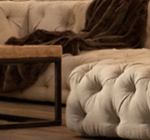
A Quick Guide to Sofa
There seems to be an endless list of style for sofa, from the old classic style into the modern minimalist type. How do you choose the right sofa for your home is ...
More




A Quick Guide to Sofa
There seems to be an endless list of style for sofa, from the old classic style into the modern minimalist type. How do you choose the right sofa for your home is ...
More

taman kulimambang
The Taman Kulimambang butterflies are all aflutter in their new home and mingling with people. The new butterfly park is located in the Tasek Merimbun Heritage Site ...
More

cut the clutter
It's summer. People elsewhere are spending more time outdoors, going on holidays, worshipping the sun, and looking golden and shiny. In Brunei, we bemoan the high ...
More